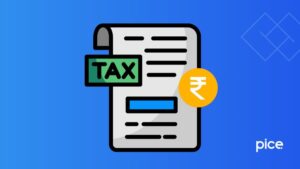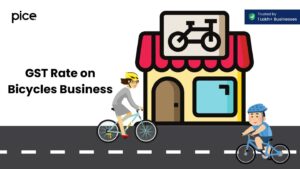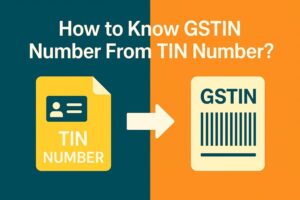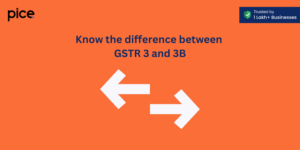RFD 01 & Form GST RFD 01A Filling Guide
- 4 Apr 25
- 9 mins

RFD 01 & Form GST RFD 01A Filling Guide
- What is GST RFD-01/ RFD-01A?
- Format of GST Refund Form GST RFD-01 & RFD-1A
- Who is Required to File the Refund Application via RFD-01 or RFD-01A?
- Common Mistakes to Avoid While Filing RFD-01
- Prerequisites of Submitting a Fresh Application for GST Refund
- Time Limit and Frequency of Submitting Form GST RFD-01A
- Conclusion
Key Takeaways
- GST refunds require Forms RFD-01 or RFD-01A.
- Refund claims below ₹1,000 are not allowed.
- Avoid common errors like invoice mismatches and missing documents.
- File refund applications within two years monthly or annually.
- Matching data in GSTR-1 and GSTR-3B ensures faster refunds.
Efficient refund processing is essential for preserving liquidity and guaranteeing taxpayer compliance under the Goods and Services Tax (GST) structure in India. In order to seek refunds of taxes, cess, and interest under different circumstances, Forms GST RFD-01 and RFD-01A are essential to this procedure.
Form GST RFD-01A is a crucial document that becomes necessary for claiming a GST recovery for different types of refunds. Taxpayers must follow different procedures for requesting a refund under varying scenarios. Moreover, taxpayers who want timely refunds must comprehend the differences between these forms and the proper methods for completing them.
This blog primarily focuses on the RFD-01 and RFD-01A forms, their formats, time limitation of filing and other aspects.
What is GST RFD-01/ RFD-01A?

Any regular taxpayer under the GST regime can submit application for refund and claim a refund against excess tax paid by issuing the application form RFD–01 or RFD–01A. However, a refund request will only be approved if the amount is ₹1,000 or more.
The RFD-01 form can be accessed online to request a refund under GST. You can e-file this document on the official GST portal to raise a request for the refund of:
- Taxes, cess or interest paid mistakenly against zero-rated supplies (excluding the exports where tax payments are involved)
- Excessive tax paid resulting from the termination or breach of a contract or agreement involving the supply of service
- The excess cash furnished into your electronic cash ledger
- Unutilised ITC or credit stored in your electronic credit ledger owing to the inverted duty framework
On the other hand, RFD-01 is a similar form that acts as a temporary solution until the time a taxpayer can access the online facility to claim their refund. Simply put, RFD-01 is the application document for refund under GST that becomes essential documentation during certain circumstances.
Format of GST Refund Form GST RFD-01 & RFD-1A
The format of form GST RFD-01A consists of the following components:
- Basic form (features serial numbers 1-10 of the form)
- Verification and declarations part
- Annexure-1
- Annexure-2
You can find a brief explanation of each of these parts in the section below:
Basic Form
This part asks for the following information:
- The GSTIN of the refund applicant/ temporary ID allotted to them
- Legal name of the applicant
- Trade name (if applicable)
- Business address (must be the principal place of business)
- Tax period concerning the refund claim (if applicable)
- The amounts of CGST, SGST, IGST, interest or cess (whichever is applicable)
- Selection of the ground of refund from the list provided
- Bank account details where the refund must be credited. In most cases this data is auto-populated based on the data entered while registering a business.
- If the reason specified for a refund requires the submission of documentary evidence under Annexure-1, then select the ‘Yes’. Otherwise, the filer must choose ‘No’.
- The last subsection of the basic form corresponds to verification where an authorised entity needs to sign under all circumstances to validate the accuracy of the declarations and information provided.
Declarations and Verification
A few declarations are necessary based on the type of refund claim initiated by a taxpayer. These declarations are mandatory to confirm that the refund claimant, and only they, bear the quoted amount of tax.
Annexure-1
Various declarations through statements in the form of evidence need to be produced or uploaded for multiple refund claims. Altogether, 11 statements are prescribed for different forms of refund mechanisms in RFD-01.
Nonetheless, you must note that no documentary evidence is required when the claimed refund amount falls short of ₹2 Lakhs. Instead, a simple declaration from the customer stating they will not use the input tax credit proves to be enough.
Annexure-2
As per the annexure-2, a certificate authorised by a Chartered Accountant or Cost Accountant has to be attached to the refund form, i.e., RFD-01/RFD-01A.
Who is Required to File the Refund Application via RFD-01 or RFD-01A?
Refund eligibility for accumulated Input Tax Credit (ITC) on exports (without tax payment) extends to all taxable suppliers, with the exception of those engaging in deemed exports and supplies to Special Economic Zones (SEZs). Taxpayers are also entitled to refunds for surplus funds held within their electronic cash ledgers or for incorrectly remitted taxes.
Individuals lacking tax registration may obtain refunds for overpayments arising from the annulment or termination of service supply contracts.
In the context of deemed exports and SEZ supplies, either the supplier or the recipient may submit a refund application for taxes paid. However, a single invoice from a deemed export permits only one refund claim. If the supplier seeks a refund, they must secure a declaration from the recipient affirming that they will not pursue a refund for the same transaction.
Common Mistakes to Avoid While Filing RFD-01
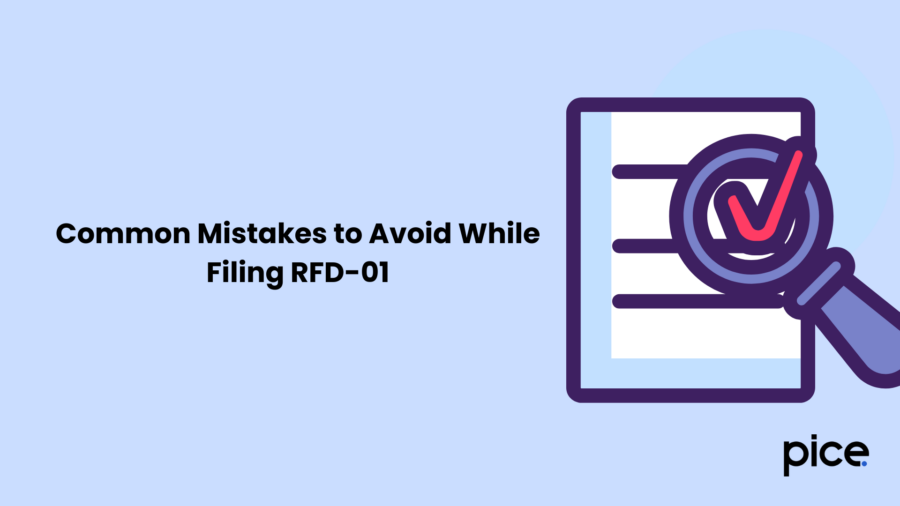
Here are some common mistakes that you must avoid while filing application of refund via RFD-01:
- Incorrect refund category selection – Choosing the wrong reason can lead to rejections or delays.
- Mismatch in invoice details – Ensure invoice values match those reported in GSTR-1 and GSTR-3B.
- Incomplete documentation – Missing documents can result in queries or rejection.
- Non-reconciliation of ITC – Refund claims should align with ITC available in the returns.
Prerequisites of Submitting a Fresh Application for GST Refund
A refund of tax and accumulated Input Tax Credit can be processed without output tax payment for zero-rated supplies and deemed exports but only after the applicants file the GSTR-1 and GSTR-3B returns for the supply month.
The particulars of GSTR-1 data should include Table 6A information about exports together with Table 6B documentation for Special Economic Zone (SEZ) units or developers and Table 6C for deemed export reporting. GSTR-1 data should guide the entry of corresponding information into Table 3.1(b) of the GSTR-3B document.
The refund process will become delayed if these reported figures do not match each other. Therefore, to make the refund process smooth, filers must ensure that they are able to access all refund-requesting invoices easily.
The timely refund process for unregistered individuals who paid excessive taxes due to cancelled service supply agreements depends on the submission of particular documentations as per notification 26/2022. These include:
- A statement providing details about invoices like invoice value, issuance date, tax paid, and so on
- Copies of the related invoices.
- Proof that each supplier has received their payments
- Scanned copy of the service agreement/ contract or any registered agreement, whichever is applicable
- Supplier's cancellation or termination letter
- Supplier-authorised proof of payment showing the payment receipts and release notices for cancellation services.
- Finally, a supplier's certificate confirming:
- Proof of completed tax payments against the invoices that customers wished to obtain as refunds.
- Non-adjustment of the tax against their liability via a credit note.
- Declaration specifying not to claim any future tax refund on the highlighted invoices and also reject present refunds for the paid tax amounts
Additionally, in certain instances, a certificate from a Chartered Accountant or Cost Accountant is required for submission.
Time Limit and Frequency of Submitting Form GST RFD-01A
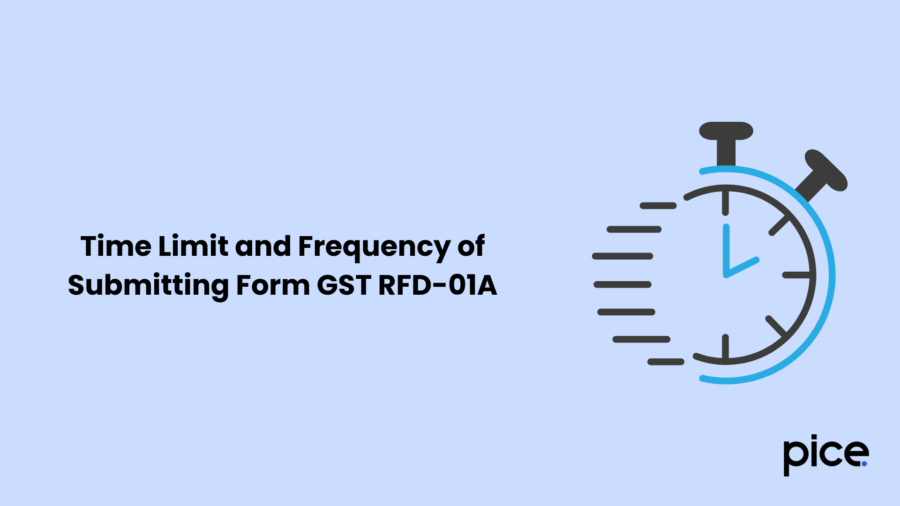
The submission of refund claims must happen through Form RFD-01 within two years following the relevant date.
All entities who are required to file Form RFD-01 must do so on a monthly basis. This action needs to be executed for the following cases:
- Refunds related to zero-rated supplies
- Refund claims that are valid because of the inverted duty structure
- Refunds concerning deemed exports
Additionally, organisations have the option to apply for refunds of surplus electronic cash ledger balances through the system.
A single RFD-01 refund application is sufficient for taxpayers looking to cover multiple tax periods that belong to the same year. Once SEZ units or developers verify the goods delivery through their designated zone officer the supplier files Form RFD-01.
The supplier files this form after a designated zone officer authenticates service receipt confirmation for supplies directed to Special Economic Zone units and developers. Unregistered taxpayers need to determine the two-year refund application deadline starting from their contract cancellation letter date.
Conclusion
Overall, the GST officer designated for refund processing thoroughly scrutinises form GST RFD-01A to find whether there are any discrepancies. If any mistakes are found, the reimbursement process can be delayed. Therefore, it is highly recommended to seek professional help and use GST return filing software for navigating these core tax-related issues.
💡If you want to streamline your payment and make GST payments via credit or debit card, UPI consider using the PICE App. Explore the PICE App today and take your business to new heights.
 By
By 








